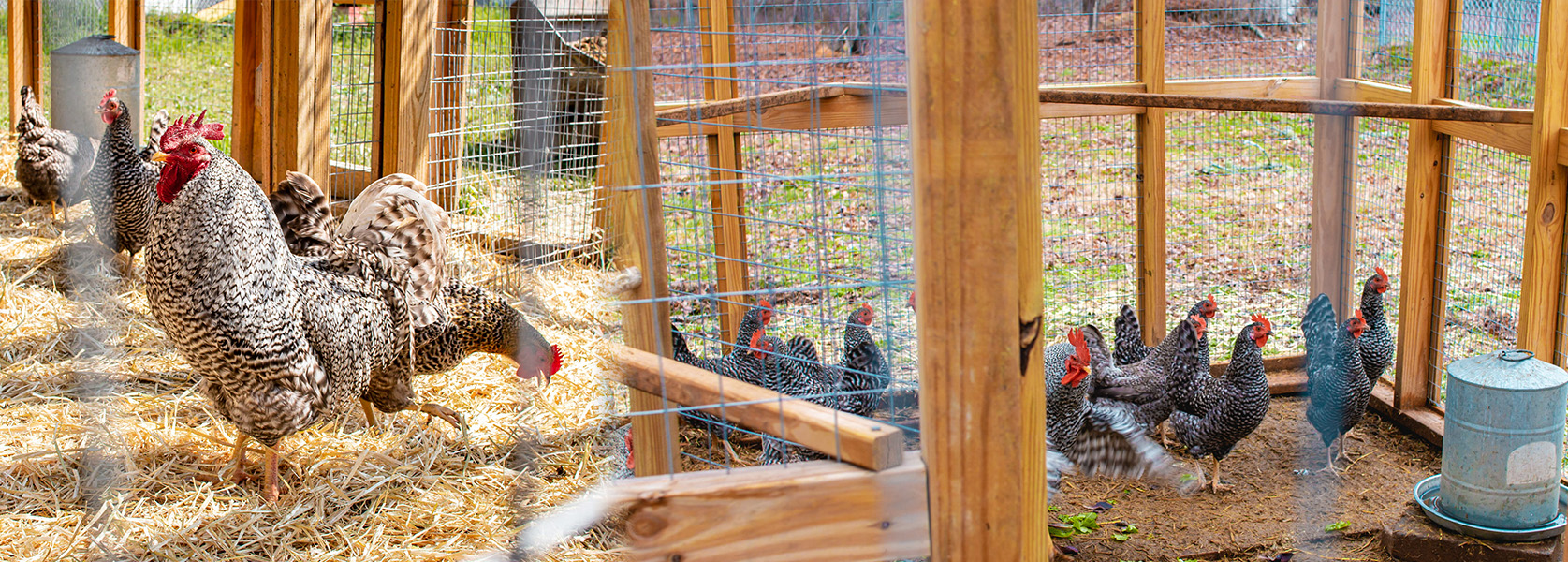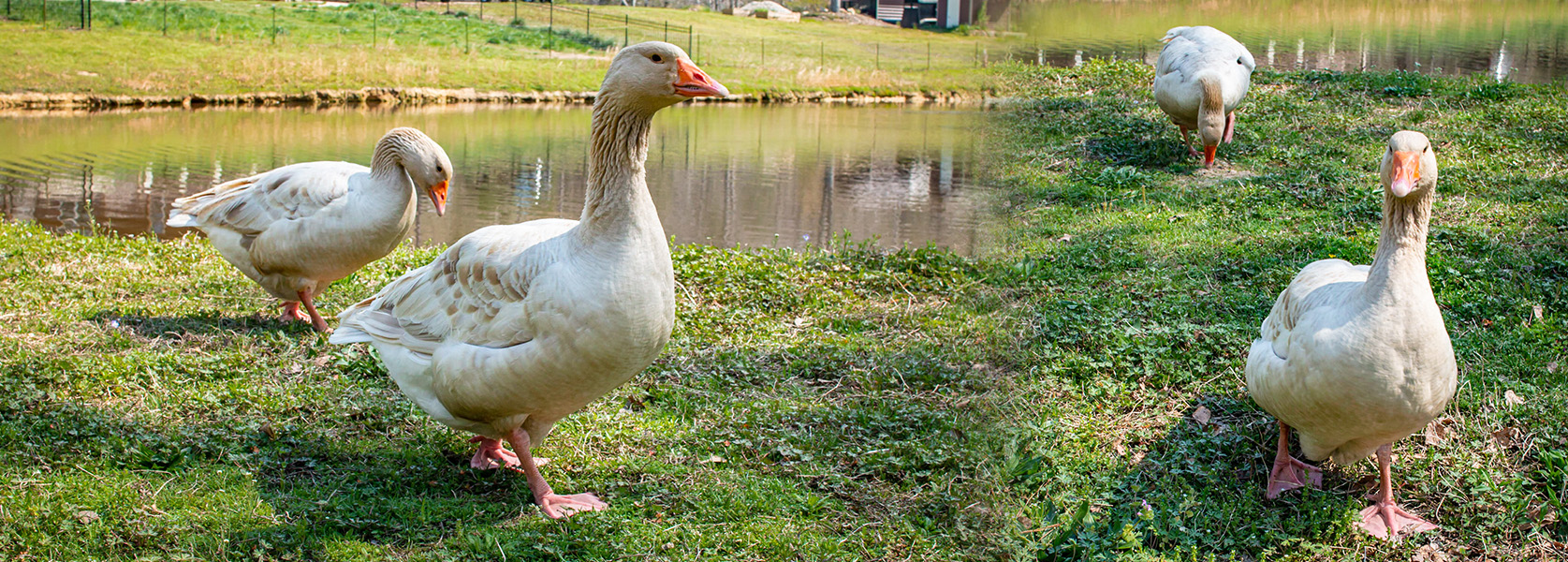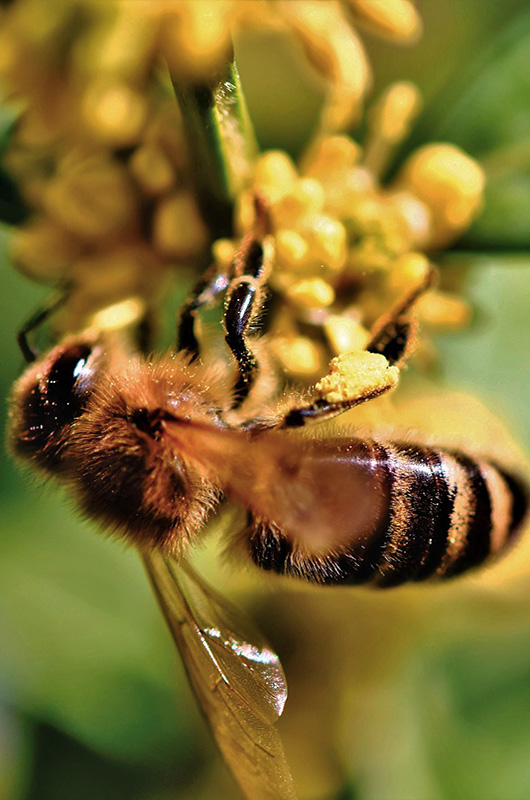Endangered Heritage Livestock Breeds
We are committed to selecting gentle, critically endangered livestock and poultry. Interaction with both children and adults is beneficial to the fuzzy residents here at the Refuge. By offering opportunities for education, therapeutic interaction and adoption of these animals, we will ensure their continued survival while providing lasting memories and an understanding of the importance of preserving our heritage breeds.
Interested in giving an endangered heritage livestock breed a forever home? Contact us! You can also Sponsor an animal by clicking here!
Goats

While Goats as a genus are not endangered, our specific breed, the San Clemente Island Goat is. Presently, there are less than 750 SCI goats worldwide.
If you are interested in having a San Clemente Island Goat as a permanent resident on your farm, please send us a message here.
About Us
San Clemente Island goats are relatively small, though slightly larger than dwarf breeds. They are uncommonly fine-boned and deer-like, and most have very gentle temperaments and excellent mothering abilities. San Clemente Island goats are typically red or tan with characteristic black markings. The island population once exhibited a wide range of colors and color markings and these can occasionally be seen today. Both sexes are horned and although their large horns resemble those of Spanish goats, San Clemente goats are not of Spanish origin.
The Livestock Conservancy, in collaboration with the University of Cordoba in Spain, conducted a DNA study of the breed in 2007 and found that the San Clemente goat is a genetically distinct breed and unrelated to the numerous other breeds in the study. The findings raise many questions about the origin of the San Clemente goat and further study is needed to gain a better understanding of this unique breed.
Handling & Our Habitat
Goats need to feel comfortable and protected. SCI Goats are curious and sweet but a bit shy until they get to know you. You will want to move slowly and deliberately and not chase after them, so you can build trust.
A simple large doghouse style structure works well, but a larger home is even nicer because they love to snuggle up together. Goats also enjoy having plenty of fresh timothy orchard hay and fresh water. To maintain the health of your goat you’ll have to maintain a clean, dry habitat. Contrary to public opinion, goats won't eat just anything and won't drink dirty water. If their treats drop on the ground, they won't eat them.
Fuzzy Faces Refuge is a member of the SCI Goat Foundation. If you would like to read more about San Clemente Goats, please follow this link.
What We Eat
Fresh weeds, timothy orchard hay and alfalfa should make up the bulk of the diet for pet goats. Feeding a diet consisting of too much grain may actually kill your goat so you will want to be careful and limit this.
A variety of human foods are okay to feed your goats. Foods like fruits, dried fruits, veggies, graham crackers, cheerios, Cheetos, and even corn chips. It is basically at your discretion of what you want to try. Just be aware that snacks are just that. Too much of anything isn’t good for them.
Goats also need loose minerals, baking soda and vitamin C to keep them healthy. Foods or supplements high in Vitamin E will helps with your goat’s reproductive health and their muscles. Goats also need zinc, iron, and selenium to make their coats shinier and enrich the fat content in their milk.
As a general rule, you should NEVER feed your goat Avocado, Azaleas, Chocolate, Plants with oxalates such as kale, Any nightshade vegetable, Holly trees or bushes, Lilacs, Lily of the valley, Milkweed, Rhubarb leaves or Wild cherries. If you let your goat roam free, make sure that you don't have any of these where they graze or forage
For a more detailed listing of things your goat shouldn't eat, click here.
Chickens

The Barred Holland breed, quite likely the rarest American chicken, is listed in the Critical category of the American Livestock Breeds Conservancy’s, Conservation Priority List. Here at the farm, we provide our Barred Holland Chickens with the environment they favor while protecting them from extinction.
If you are interested in having a Barred Holland Chicken as a permanent resident on your farm, please send us a message here.
About Us
The Barred Holland Chicken is a medium-sized, heavy chicken breed with yellow-colored skin and legs and a muscular body. When viewed from the side, their thick nec, body and tail feathers give the bird a shape resembling a heart. Females are darker in color than roosters. They all sport a bright red six-pointed single comb and red wattles and earlobes. Roosters typically weigh between 7.5 and 8.75 lbs and hens about 5.5 and 6.5 lbs. They usually live for about 8 years.
These American-bred chickens got their name because they can be traced to a breed imported from Holland. The Holland chicken was light-weight and lay white eggs. It was mated with heartier domestic breeds such as the White Leghorn, Rhode Island Red, New Hampshire, and Lamona. The resulting White Holland breed was then bred with White Leghorn, Barred Plymouth Rock, Australorp, and Brown Leghorn and Barred Holland Chickens were born. The breed can be traced back to 1949, when they were documented with the American Poultry Association Standard of Perfection.
Handling & Our Habitat
We are friendly and calm, and get along with people and other animals. Although we are pretty chill, we do have a definite pecking order. We don't back down easily if we feel our dominance is threatened by someone new. We like to meet newcomers slowly so our coop doesn't get stressed.
Here on the farm we are registered as a “critical” conservation status and FFR is licensed to keep us. That doesn't mean we are high maintenance! We maintain ourselves with a good dust bath and you can add natural herbs in the sand to repel pesky insects and soak up the excess oil from our feathers. We are attention-lovers and happily submit to examinations for mites, lice, or other parasites. The farm checks us out at least once a week and de-worms us regularly!
What We Eat
We love to forage for our own food during the day so it is important to feed us the right nutrients first thing in the morning to make sure we get a balanced diet. We need chicken grain or mash starting at about 8 weeks old. When we are babies, we need a special chick starter. Once we are old enough to begin laying, we get extra protein and calcium in our diets to replenish our nutrients. This insures we lay the best quality eggs and stay in good health! We do enjoy leftover scraps of fruits and veggies on the farm and love them frozen into ice-pops on hot, summer days.
When we get the right nutrition, we give it right back to the farm in the form of an excellent fertilizer for the vegetable and flower gardens.
Geese

While Geese as a whole are not endangered, our particular breed - The American Buff, are. We are the most gentle and calm breed of Geese, and we love swimming and grazing!
If you are interested in having an American Buff Goose as a permanent resident on your farm, please send us a message here.
About Us
The American Buff is a lovely apricot-fawn color. The buff colored feathers on their backs and sides are edged with creamy white. They are calm and docile. They are good parents, attending well to their goslings. These attributes make the breed well suited for the average home flock!
This breed is the largest of the medium weight class of geese with mature ganders weighing about 18 pounds and mature geese weighing about 16 pounds. They lay between 15 to 25 eggs per year, live about 15 to 20 years and are very curious. Geese are every bit as smart as dogs!
Handling & Habitat
We are more than just very large waterfowl. We make excellent watchdogs for a flock of ducks. If you're raising waterfowl or any other small birds or animals, it's always a good idea to have us "guard" birds handy.
Whether you consider it an advantage or disadvantage, we'll let you know when a stranger arrives. And, interestingly enough, more people are afraid of geese than dogs so you can use us as a deterrent to trespassers.
Geese are the most intelligent poultry. You will be surprised by their understanding of the events going on around them. They enjoy companionship, they play, they seem to have emotions, and they will communicate with you if you listen. They are extremely protective of their family. The bad part of this is they may become territorial during the spring breeding season. The fascinating part of this is they will often adopt and raise baby goslings that are not their own - even if they were not sitting on eggs or being parents at the time.
What We Eat
Our favorite food is grass; so, if you have a lawn, orchard or pasture where you need the grass kept under control, we'll be happy to help. Without grass, we'll eat around a half a pound of food per day.
Geese love greens such as cabbage, cauliflower leaves, lettuce. spinach and chard. Geese may like other vegetables like carrots, green beans, and celery. They will also eat leftover vegetables like cooked potatoes, carrots, parsnips, etc.; but, not all geese like the same things and usually have to get a taste for things just like people.
Whole grains, whole oats, lentils, brown rice, small seeds, corn and split peas are some of the foods geese enjoy. Additionally, unprocessed popcorn (free of additives, salt, and butter) and small seeds like sunflower seeds make good snacks for geese.
As a general rule, you should NEVER feed your goose any processed food. Things like white bread, candy, junk food, fast food, chips, and anything with high levels of salt, sugar, and fat should not ever be fed to geese. Geese cannot effectively digest most breads. Bread contains little to no nutrients and therefore is not really a good choice as a feed for geese. Young geese which take in too many carbs may develop angel wing, a condition which prohibits proper development of the wings. Most people advise against feeding any kind of bread to waterfowl, but in small amounts, whole grain bread may be an acceptable exception.
Bees

Breed : Native Honey Bees
We hope to help honey bees continue to thrive with our managed hives on FFR property! Did you know that one bee would have to fly around 90,000 miles (three times around the globe) to produce one pound of honey? The average bee will make 1/12th of a teaspoon of honey in its lifetime, and visits 50-100 flowers during a single collection trip!

